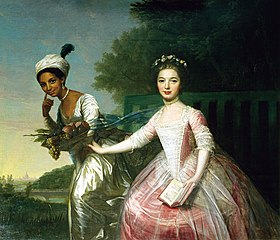I recently saw Belle (2013), a film based on the true story of Dido Elizabeth Belle, a woman of color and status in late eighteenth century England. While the film diverges from the actual facts, it does so to underscore the messages of the film.
Some reviewers have pointed out the “Austen-esque” nature of the story, focusing as it does on marriage as a goal for women, and the conflict between marry for station and marrying for love. While I acknowledge that modern viewers may feel it’s a very Austen story, it also accurately reflects the concerns of women, in this case elite women, of late eighteenth century Britain. Their choices were, as presented, marry or serve the family as spinster chatelaine.
I can see this film being a useful resource for teaching late 18th century British/Atlantic history. The characters discuss, through the course of the film, that trifecta of modern historical analysis: race, class, gender. The film would also be useful for a course on material culture, as it highlights the way people of color were portrayed in paintings of the era (slight spoiler at that link, but only slight). I was occasionally reminded of the blog People of Color in European Art History while watching, and this poster stating that representation matters. The film of course speaks to the present as much as the past, but not in a way which diminishes either message. I look forward to reading more responses to the film.
